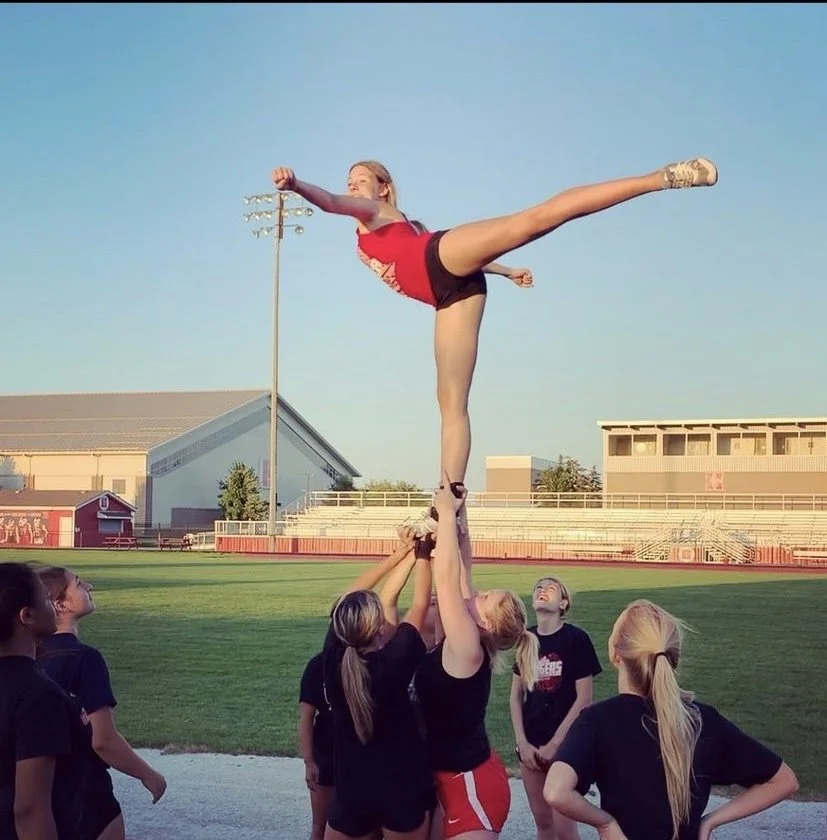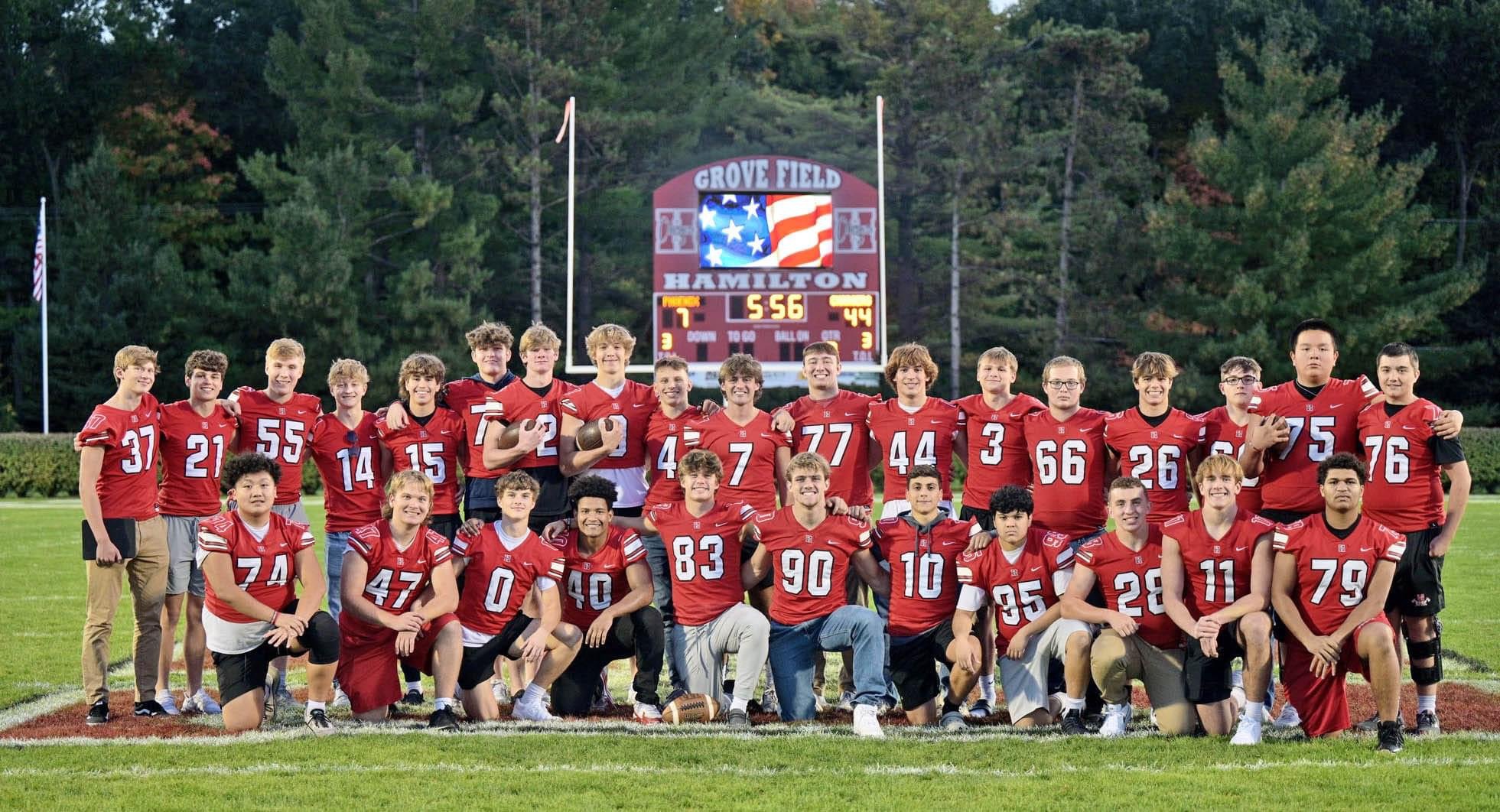The Truth About Hamilton Cheer
The Hamilton Cheer Team stands on the sidelines before a game. Photo by Roberta Pratt
Nevaeh Hughes
Two minutes and 30 seconds. That’s all you can think about as you wait to take on the mat. Months and months of practice for two minutes and 30 seconds. That’s how much time you have to prove you’re the best. To smile the biggest, brightest smile, to yell the loudest you have ever yelled, and jump the highest you have ever jumped. This will be your greatest performance because you won’t be the one to hold everyone else back.
Varsity level school cheer has many misconceptions around it as cheerleaders can be viewed as energetic airheads or maybe even provocative. But in reality, they are hard-working, focused, committed, athletic, and so much more.
“Cheering in high school offers an opportunity to be involved and interact closely with the student body and multiple athletic teams. This year at Hamilton has been especially exciting as the football team was so successful and cheerleaders had the best “seat” at games being right on the sideline. School cheer encourages teamwork and accountability and teaches time management, which are all valuable life skills.”
A normal season for Hamilton goes from the end of May until about March the following year. The cheerleaders are present at every football game and basketball game cheering the players on and engaging with the crowd. That’s not all cheerleaders do though. In addition to attending games, they practice several nights a week to prepare themselves for their competition season.
Traditionally, competitions are on Saturdays. When they arrive, they warm up and get ready to perform. Anticipation and jitters course through their bodies as they wait to step in front of the judges. The second they step on the mat, they are being graded and every little thing matters. From spacing, engagement, and energy to smiles, there is no room for imperfection.
“Competitions are my favorite part of cheerleading. They bring us closer as a team.”
So how do cheerleaders even practice and prepare for a competition? This year, they have three hour practices twice a week with one game each week, and as competitions get closer, they increase practices to three times a week. They work on sharpening their motions, voice projection, and stunting skills. Stunting can be very dangerous because it involves holding a girl in the air. As they progress, skills become harder so flipping and spinning in mid-air become regular, which could lead to injuries and accidents when stunts aren’t executed properly.
Cheer shows off a difficult stunt, demonstrating athleticism and the potential danger to cheerleaders. Photo submitted by Nevaeh Hughes
“Stunting is actually a lot harder than people think, and it’s easy to get hurt. It always has the potential of being dangerous.”
Besides that, they work on strengthening and conditioning so they are able to try difficult tricks and be stable. Though not widely known, Hamilton Varsity Cheer has been State champions for the past three years. Everything considered, cheer is a family and there is a deep trust in each other since their lives are technically in each others’ hands at times. Hamilton cheerleaders are performers and athletes who love their sport.
The Hamilton Cheer Team poses for a photo before one of the games. Photo by Cortney Erxleben








